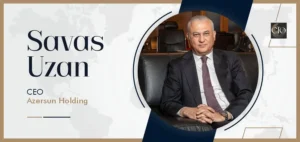In today’s rapidly accelerating business world, sound leadership is all about trust. Larger than a buzz word, trust is the invisible but powerful force that connects leaders and their organizations, employees and companies, brands and customers. Without it, leadership dissipates into authority; with it, leadership becomes lasting influence. Trust-building leaders don’t just receive respect—they elicit loyalty, cooperation, and long-term success.
Understanding the Pillars of Trust
Leadership trust relies on foundations of integrity, competency, transparency, and empathy. A credible leader has consistent values and actions and follows words by actions. There is decision making on the grounds of fairness and ethics, so followers trust such a leader. Competency allows followers to perceive that their leader can guide the organization in the right direction, and transparency avoids uncertainty and allows openness. Empathy makes others feel heard, seen, and valued—enriching the human relationship at the core of successful leadership.
Trust as a Two-Way Street
Leadership isn’t a solo act. While it’s essential that subordinates trust their leader, the reverse is no less essential. By trusting subordinates, leaders grant individuals the freedom to own, think innovatively, and act courageously. Empowerment creates a culture of mutual respect and self-leadership. Staff that are made to feel trusted tend to surpass objectives, share thoughts, and be loyal to organizational objectives. Within this symbiotic relationship, trust is the cement that holds teams on track and motivated.
Consistency Builds Confidence
Consistency of behavior, expectation, and decision-making is essential in trust building. Where managers act in a contradictory way or change priorities without transparency, confidence is destroyed. Teams need to know what to expect from their leaders and how decisions are made. A consistent leadership style builds reliability and psychological safety, allowing people to focus on their work without fear of arbitrary change or discrimination. Trust, in this way, is an investment made over time, built one reliable act at a time.
Communication as a Trust-Building Tool
Open, honest, and frequent communication is probably the most effective means of establishing trust. Openly communicating leaders, who not only share success, but failure and doubt, show vulnerability and honesty. Credibility and likability result from this. Frequent updates on progress, open feedback, and listening are simple habits that show leaders are not merely giving orders, but are concerned for their people. When people feel they are listened to and they matter, they will be more likely to adhere to leadership and prioritize organizational objectives.
The Role of Accountability
Accountability is a foundation of trust. Leaders need to hold themselves to the very same expectations that they have for other people. When they assume responsibility for mistakes, claim the results, and display ethical actions, they establish their reliability. Trust erodes over time when leaders turn blame away or provide leniency for themselves. However, leaders who practice accountability every day make a culture that everyone recognizes integrity is not a choice.
Empathy and Emotional Intelligence
Empathy is not a soft skill—it’s a leadership requirement. In high-stakes cultures, leaders who are attuned to and responsive to the emotional needs of their teams build deeper trust. Stress management, recognition of achievement, and individual development all are contributors to emotional allegiance. Emotional intelligence enables leaders to operate across interpersonal contexts with sensitivity and empathy, demonstrating that trust isn’t just about outcomes—it’s about people.
Surviving Crisis through Trust
Only when crisis strikes can the real power of trust be unleashed. It could be economic decline, restructuring of the organization, or disruption from outside. The leaders who have gained trust can successfully take their teams through adversity together and with courage. During times of utmost pressure, individuals turn to leadership for guidance and reassurance. And if trust has been established in good time, then leaders will receive support, tolerance, and devotion even when some decisions have to be made which are hard.
Building Trust in a Virtual Environment
It’s less easy to establish trust in virtual and remote work environments. Without the presence of face-to-face interaction, leaders have to be even more deliberate with their behavior. Regular virtual check-ins, clearly communicated expectations, and acknowledgment of contributions are essential. Technology can support communication, but tone of voice, responsiveness, and attentiveness will ultimately make or break trust in a virtual environment.
Long-term Impact of Trust-Based Leadership
Trust-based leadership has implications that extend well beyond individual relationships. Companies with high levels of trust have more committed employees, reduced turnover, enhanced innovation, and greater performance. Customers also will be more loyal to brands they trust. Internally and externally, trust liberates an organization’s capacity to grow and sustain success. It generates collaboration rather than competition, purpose rather than politics, and harmony rather than conflict.
Conclusion: The Enduring Power of Trust
Leadership is fundamentally a relationship. And like every relationship, it’s sustained on the platform of trust. Leaders who prioritize trust don’t use authority to dictate—instead, they build loyalty on the soil of respect, empathy, and integrity. They foster an environment in which people feel comfortable adding value, innovating, and evolving. In a world that can never be sure, changing every day, trust is the most valuable asset any leader can have. It is the intangible power that makes strategy work, vision a reality, and leadership a legacy




